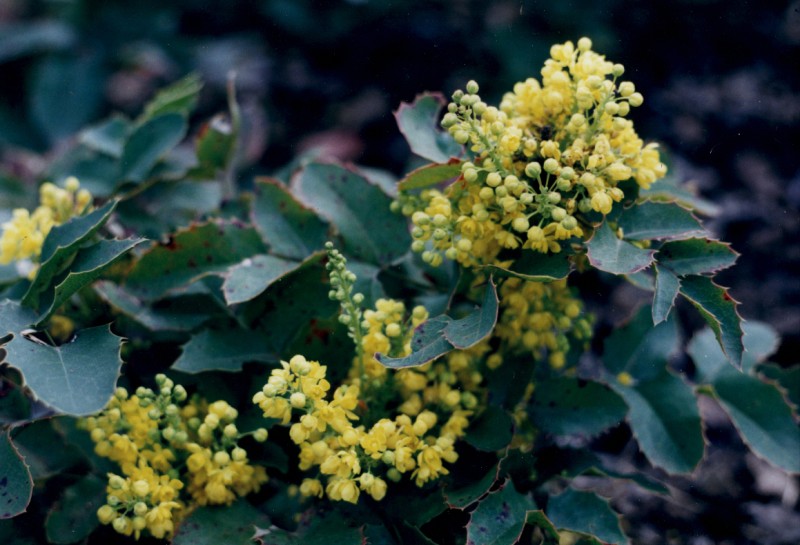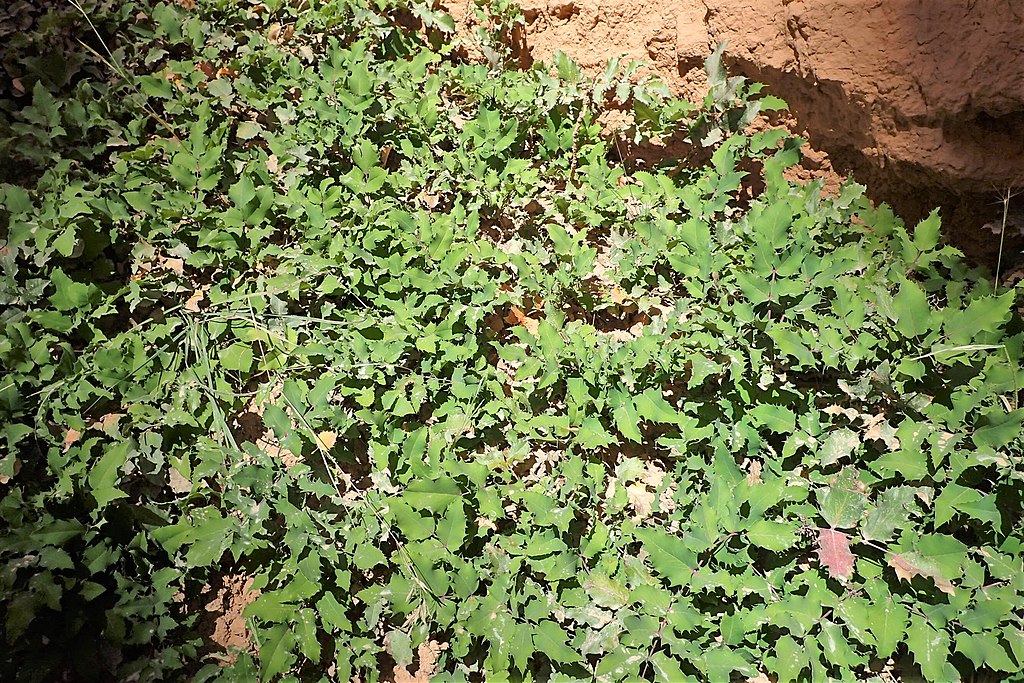Creeping Oregon Grape
Berberis repens
Plant Description
Creeping Oregon grape is a low, spreading evergreen shrub native to western North America. Similar to Cascade Oregon grape (B. nervosa), it is often found in open forests, woodlands, and rocky slopes. It has glossy, holly-like leaves that take on bronze to reddish hues in colder months, providing year-round interest. In spring, it produces clusters of fragrant yellow flowers that support pollinators, followed by dark blue berries that feed birds and mammals. Its ability to tolerate drought, shade, and poor soils makes it an important understory species for erosion control and a resilient choice for native plant gardens. Its native range is east of the Cascades, but it grows well on dry sites in the Willamette Valley.
Creeping and Cascade Oregon grape are both low-growing Oregon grapes, but they can be distinguished by growth form and leaf arrangement. Creeping Oregon grape spreads horizontally with a trailing, creeping habit and has shorter, more rounded leaflets, often forming loose mats. In contrast, Cascade Oregon grape grows in upright clumps with leaves held in distinctive flat, layered tiers, and its leaflets are longer, narrower, and more sharply toothed. Habitat preference also differs slightly: Cascade Oregon grape is more common in shaded coniferous forest understories between the Cascade ridge and the coast, while creeping Oregon grape often occurs in drier, more open forests and rocky sites east of the Cascades. Both grow well in the Willamette Valley.
Plant Details
| Life Forms | |
|---|---|
| Habitats | |
| Soil and Moisture Conditions | |
| Special Uses | |
| Shade Preference | |
| Mature Height | 12 – 36” |


